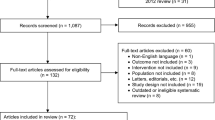Abstract:
This study compared the clinical efficacy (determined from micturition diaries) and safety of 12 weeks’ treatment with either tolterodine 2 mg twice daily, oxybutynin 5 mg three times daily or placebo in patients with an overactive bladder. A total of 277 patients were randomized and treated at 25 centers. Both tolterodine and oxybutynin significantly increased volume voided/micturition compared to placebo. Both treatment groups evoked greater decreases in micturitions per 24 hours and incontinence episodes per 24 hours compared to placebo; however, only tolterodine was significantly better than placebo in reducing micturition frequency. Tolterodine and oxybutynin were equivalent in their effectiveness. Tolterodine was significantly better tolerated than oxybutynin when adverse events (particularly frequency and intensity of dry mouth), dose reduction and patient withdrawals were considered. Oxybutynin is an effective drug whose frequent adverse effects limit its clinical usefulness. Tolterodine has equivalent efficacy to oxybutynin, but with less severe adverse effects. This will allow patients to receive more effective treatment for their condition, with better compliance.
Similar content being viewed by others
Author information
Authors and Affiliations
Additional information
Rights and permissions
About this article
Cite this article
Drutz, H., Appell, R., Gleason, D. et al. Clinical Efficacy and Safety of Tolterodine Compared to Oxybutynin and Placebo in Patients with Overactive Bladder. Int Urogynecol J 10, 283–289 (1999). https://doi.org/10.1007/s001929970003
Issue Date:
DOI: https://doi.org/10.1007/s001929970003




